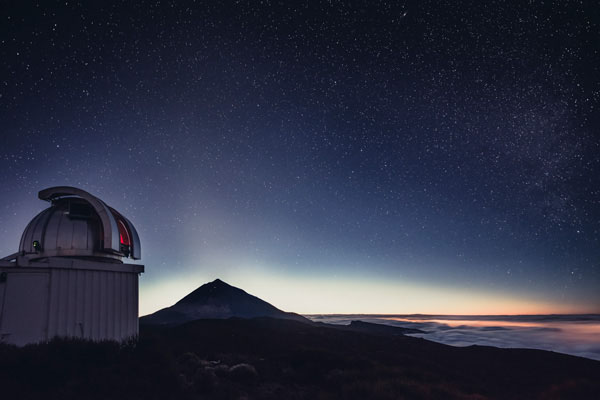| Jul 18, 2024 |
Opening up new ground in the search for dark matter
|
|
(Nanowerk News) A new kind of detector for dark matter has the potential to make a direct detection of the enigmatic material, according to an analysis by RIKEN physicists.
|
|
Objects that astronomers can detect are thought to make up only about 15% of the mass of the Universe; the other 85% is made up of dark matter. The nature of dark matter is one of the great mysteries in modern physics.
|
|
“Dark matter is very elusive,” says Javier De Miguel of the RIKEN Center for Advanced Photonics (RAP). “We’re most likely being bombarded by dark-matter particles every second without noticing it.”
|
|
A global search is underway to try to directly detect dark matter. “Several candidates for dark matter are being explored in parallel in an enormous joint effort by the scientific community,” says De Miguel. “I’m optimistic that the detection of dark matter could be one of the landmark events of this century.”
|
|
In 2021, De Miguel reported on a new kind of dark-matter detector, which he called the Dark photons & Axion-Like particles Interferometer (DALI), for detecting dark-matter candidates known as axions.
|
|
The DALI is now in the design and prototyping phase, and it is expected to be installed at Teide Observatory at Tenerife, with a target commissioning time of about five years.
|
 |
| Teide Observatory, Tenerife, at dusk. A new detector to be installed at this location may allow physicists to detect dark matter, which is impossible to detect using conventional astronomical instruments. (Image: Westend61 / Getty)
|
|
To evaluate the prospects of DALI detecting axions and other dark-matter candidates, De Miguel and Chiko Otani, also of RAP, and their co-workers have conducted an analysis of the detector.
|
|
Their forecast predicts that over about 15 years of operation DALI will be able to cover a significant portion of the parameter space where the axion (if it exists) might be hiding. The analysis also indicates that DALI may also be able to detect another possible candidate for dark matter known as the dark photon.
|
|
DALI will be able to cover uncharted territory. “Previous experiments had limitations when it came to searching for dark matter at high frequencies. DALI solves this problem by adopting a new strategy,” says De Miguel. “If the axion or dark photon exist in this territory, we may pioneer a direct detection.”
|
|
The analysis also revealed strategies that could be used to enhance the effectiveness of DALI, including installing it on a steerable mount and creating an array of small DALI detectors.
|
|
Based on the analysis, De Miguel is convinced that DALI has the potential to make a vital contribution to the global search for dark matter. “I believe that the DALI experiment can play a key role in the search and detection of dark matter,” says De Miguel. “Especially since it is reasonably low cost and feasible to implement.”
|
Reference
|
|
De Miguel, J., Hernández-Cabrera, J. F., Hernández-Suárez, E., Joven-Álvarez, E., Otani, C. & Rubiño-Martín, J. A. Discovery prospects with the Dark-photons & Axion-Like particles Interferometer. Physical Review D 109, 062002 (2024). doi: 10.1103/PhysRevD.109.062002
|
|
De Miguel, J. A dark matter telescope probing the 6 to 60 GHz band. Journal of Cosmology and Astroparticle Physics 4, 75 (2021). doi: 10.1088/1475-7516/2021/04/075
|

